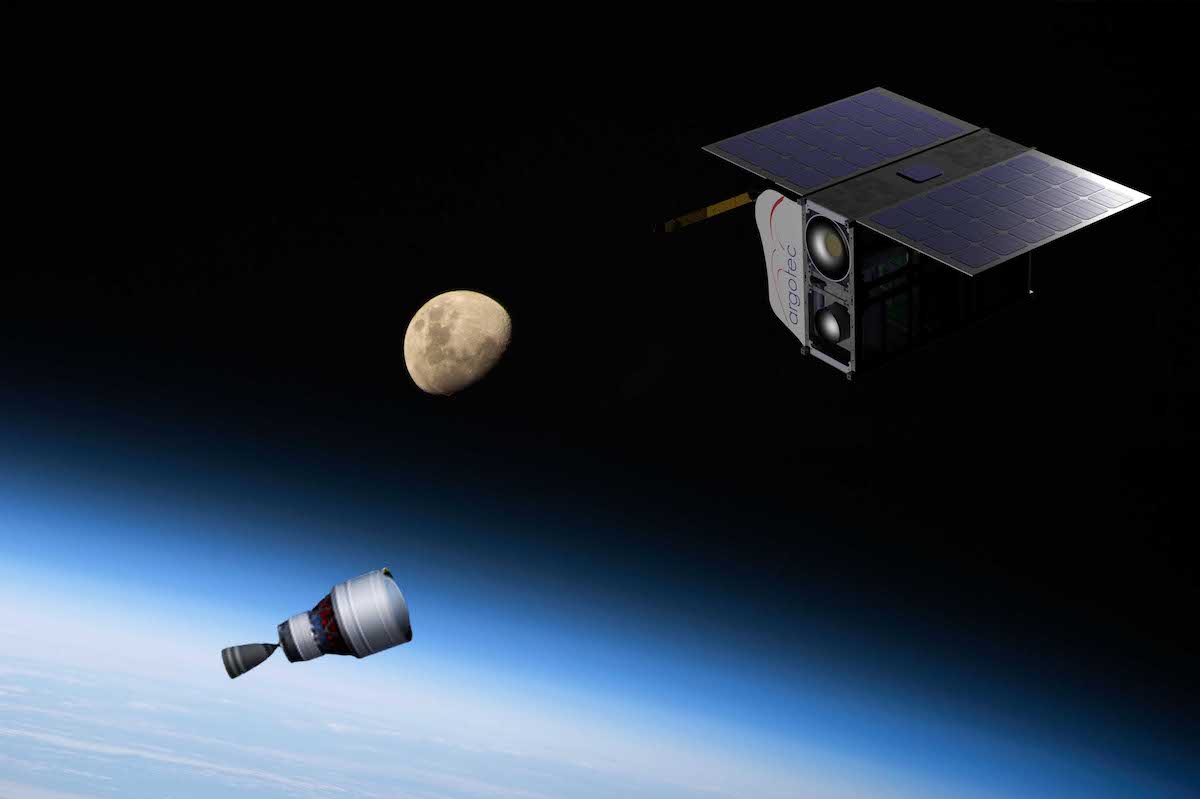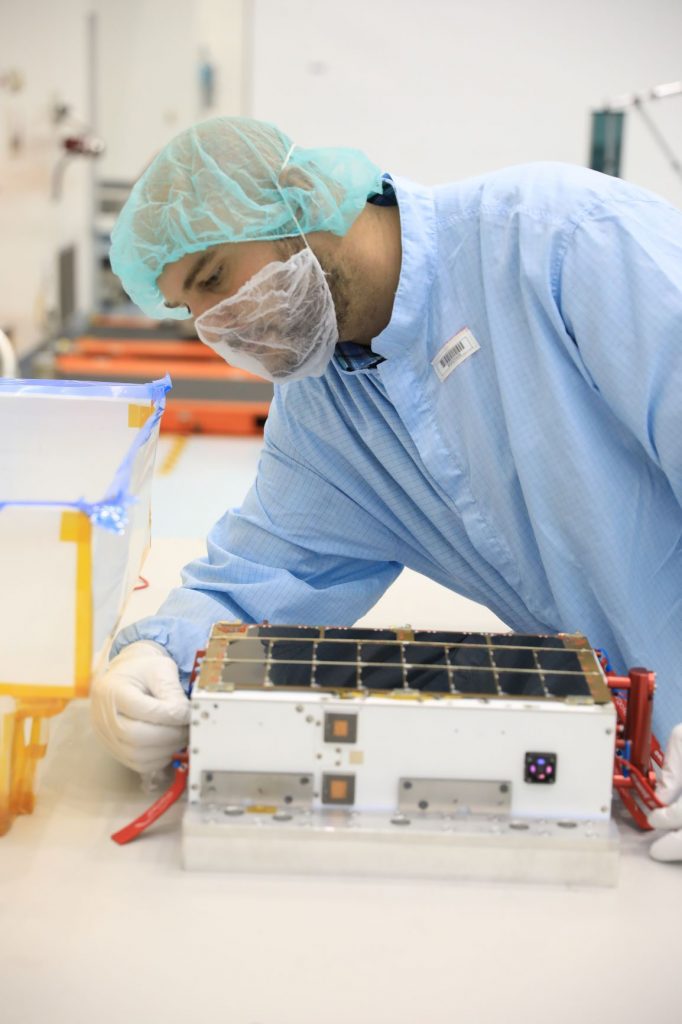
Italian engineers are expecting a series of spectacular photos from a tiny satellite that will be released to fly in sync with the interim cryogenic propulsion stage that propels the Orion capsule and European service module to the moon from Earth orbit.
Dubbed ArgoMoon, the CubeSat is one of 10 supplementary payloads that will be launched from Kennedy Space Center in Florida by NASA’s SLS rocket on its first lunar test flight as early as this Monday.
The small spacecraft use high-definition cameras and advanced imaging software to record images of the ICPS and later of the Earth and the Moon for historical documentation, provide mission data on the deployment of other CubeSats, and test optical communication capabilities between the CubeSat and Earth.
ArgoMoon, built by Italian company Argotec for the Italian Space Agency — ASI — through an agreement with NASA, will be the only European secondary payload on the first Artemis mission.
After launch, it will be one of the first satellites to be deployed in order to get in position for its mission of photographing up-close the ICPS. Its goal is to capture unique pictures of the ICPS for technical as well as outreach purposes.
The CubeSat will use a hybrid micropropulsion system (MiPS) that combines green mono-propellant and cold gas propulsion in a single system to provide attitude control and orbital maneuvering using a small amount of power.
These enhanced attitude capabilities will also be used to run and validate artificial intelligence-based algorithms for autonomous failure detection, isolation and recovery systems that perform continuous monitoring of the health of the satellite to detect potential malfunctions.
ArgoMoon’s mission is a forerunner of technologies for deep space application that could one day be used without the involvement of ground controllers for the inspection of satellites not originally designed to be serviced.
Once released from its dispenser on the Artemis 1 mission, ArgoMoon will distance itself from the interim cryogenic propulsion stage, stabilize itself and automatically locate the craft that took it to space using image recognition software – custom built, of course, because none of this has been done before!

Simone Pirrotta, head of the Robotic Exploration Missions Office at ASI, explained: “ArgoMoon will be able to operate autonomously and perform SLS tracking and proximity flight navigation, making use of a complex image recognition algorithm based on artificial intelligence (AI).
“These operations are carried out by two optical payloads and the obtained photography will be used to support the NASA and payload communities in providing information regarding the status of their deployment and the condition of the second stage as it completes the final phase of its mission.”
ArgoMoon’s prime mission is to offer a prime view of the action for post-mission analysis, something that has not been done in this way before. As well as valuable to engineers, the snapshots promise awe-inspiring, science-fiction-like views of a spacecraft in Earth orbit.
After ICPS moves towards a heliocentric orbit for its disposal, the ArgoMoon satellite will have finished its main purpose, but the mission will be far from over.
Its small thrusters will fire to put it in an elliptical orbit around Earth, bringing it closer and closer to the Moon on each round. Over several months it will continue to document its flight and take images of Earth and the Moon while also testing the nanotechnology it uses in the harsh environment of deep space.
Finally, at the end of its mission, ArgoMoon will perform a maneuver to bring the satellite into a heliocentric orbit for its own disposal phase.
